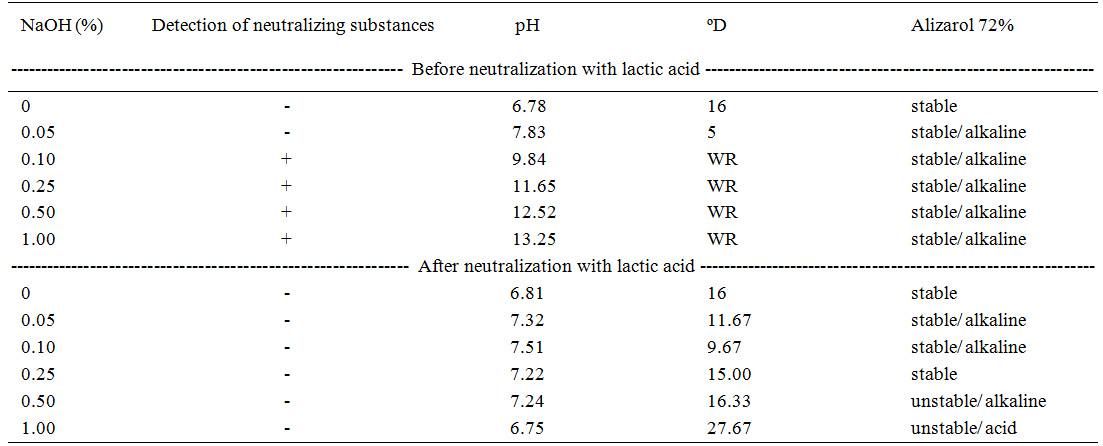Milk fraud has been a recurring problem in Brazil; thus, it is important to know the effect of most frequently used preservatives and neutralizing substances as well as the detection capability of official tests. The objective of this study was to evaluate the analytical sensitivity of legislation-described tests and nonspecific microbial inhibition tests, and to investigate the effect of such substances on microbial growth inhibition and the persistence of detectable residues after 24/48h of refrigeration. Batches of raw milk, free from any contaminant, were divided into aliquots and mixed with different concentrations of formaldehyde, hydrogen peroxide, sodium hypochlorite, chlorine, chlorinated alkaline detergent, or sodium hydroxide. The analytical sensitivity of the official tests was 0.005%, 0.003%, and 0.013% for formaldehyde, hydrogen peroxide, and hypochlorite, respectively. Chlorine and chlorinated alkaline detergent were not detected by regulatory tests. In the tests for neutralizing substances, sodium hydroxide could not be detected when acidity was accurately neutralized. The yogurt culture test gave results similar to those obtained by official tests for the detection of specific substances. Concentrations of 0.05% of formaldehyde, 0.003% of hydrogen peroxide and 0.013% of sodium hypochlorite significantly reduced (P<0.05) the microbial counts in milk after 24 and 48h refrigeration. Formaldehyde and sodium hypochlorite remained detectable in milk after 48 and 24h of refrigeration, respectively; while hydrogen peroxide could not be detected after 24h. Official tests for the detection of milk fraud by the addition of preservatives and neutralizing substances present limitations and may be ineffective in detecting milk adulteration
fraud; formaldehyde; hydrogen peroxide; chlorinated compounds; inhibitors



